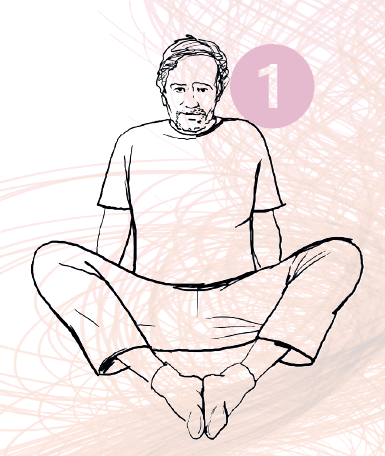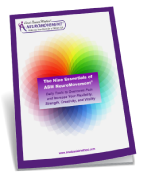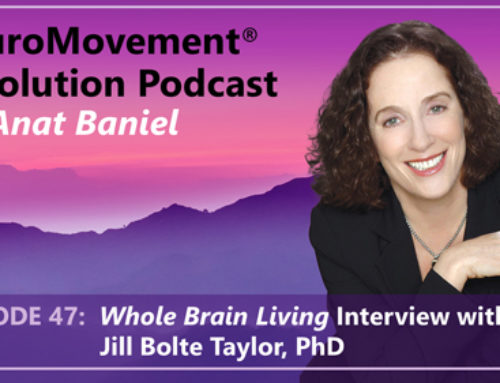Powering Up the Middle: What Doctors Don’t Tell You
Second Article in a Whole Body Fitness Series by Anat Baniel
I have been writing a series of articles for the magazine What Doctors Don’t Tell You. Following are highlights from the second article in this series.
If you want to read the first article, which was published in the May 2016 issue in the UK, click on the following link: Easing Into Fitness.
 Below are some highlights and a link to the full article: Powering Up the Middle (how to wake up a lazy pelvis). There are several NeuroMovement® lessons in the article that I encourage you to try!
Below are some highlights and a link to the full article: Powering Up the Middle (how to wake up a lazy pelvis). There are several NeuroMovement® lessons in the article that I encourage you to try!
The brain is responsible for every movement of our body by creating billions of connections that gradually map the various parts of the body. These connections integrate into patterns—what some call ‘neural networks.’ Through these neural networks, the brain organizes and controls all of our movements.
When we want to be able to do something new, or improve on what we already can do, we need to provide the brain with new information with which it can create additional connections and patterns that move us beyond our current limitations.
Over the years I have come to realize that often, the experience of pain, limitation, or feeling of being stuck are the result of areas of ourselves that we have underdeveloped and are less aware of. And that’s the good news, because the human brain is built to respond to its experiences and change at any age.
The brain is always at the ready to wake up and resume creating the new.
There’s no limit that we know of in the brain’s ability to continue to differentiate, learn, and improve, even in areas where we already excel.
One area for which many people could use greater differentiation and representation in the brain is the pelvis, where the most powerful muscles in the body are attached.
In any movement that we do, when performed well, the pelvis needs to proportionally generate more power than any other part. Yet, for so many people, the pelvis is asleep.
 I recommend that you try the NeuroMovement® Lesson for the pelvis in the article, and see what happens. This lesson will help to increase representation of the pelvis in the brain, and so improve the movement of the pelvis itself and the many other movements associated with it.
I recommend that you try the NeuroMovement® Lesson for the pelvis in the article, and see what happens. This lesson will help to increase representation of the pelvis in the brain, and so improve the movement of the pelvis itself and the many other movements associated with it.
When you do the lesson: Remember to do the movements slowly, with as little force as you can, and pay close attention to what you feel as you move. These are three of what I call the Nine Essentials—the conditions demonstrated by science to help the brain powerfully change for the better.
Click Here to read the full article Powering Up the Middle in What Doctors Don’t Tell You.
What Doctors Don’t Tell You
 What Doctors Don’t Tell You (WDDTY) is a monthly magazine which publishes the latest healthcare news, alongside information on complementary therapies and alternative medicines, with a host of features and stories written by leading experts and our highly-respected regular contributors.
What Doctors Don’t Tell You (WDDTY) is a monthly magazine which publishes the latest healthcare news, alongside information on complementary therapies and alternative medicines, with a host of features and stories written by leading experts and our highly-respected regular contributors.
WDDTY began as a newsletter, with the first issue being published at the end of 1989 by best-selling author Lynne McTaggart and her husband, former Financial Times journalist Bryan Hubbard. Since then, it has gone from strength-to-strength thanks to our ever-growing number of passionate fans, and is now the largest magazine of its kind in the UK, sold in 14 countries worldwide (including the US).
Learn More about What Doctors Don’t Tell You: www.wddty.com.
I’d love to hear what you think about this whole body fitness series. Please share your feedback with us on Facebook at www.facebook.com/anatbanielmethod.




